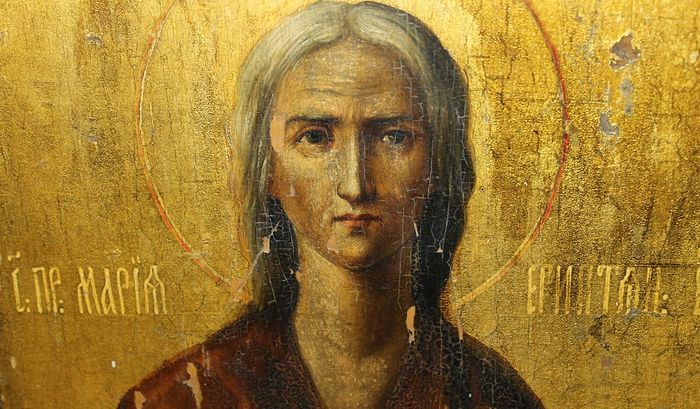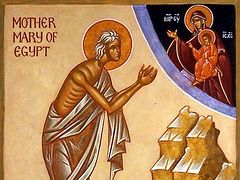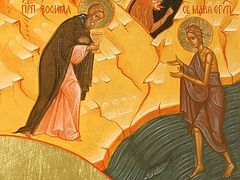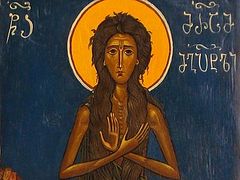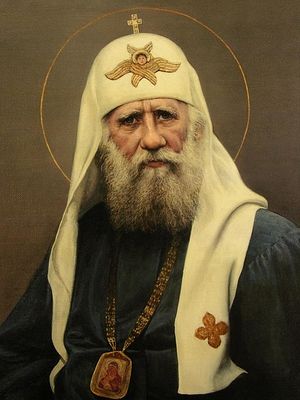 Today we present a translation of an article by St. Tikhon, Patriarch of Moscow and All Russia that has never been republished since it appeared for the first time in the Warsaw magazine, Beseda. St. Tikhon was then Archimandrite of Chelm Theological Seminary, which is now Polish territory. This publication was compiled by Natalia Alexandrovna Krivosheeva, a senior researcher of the Department of the Contemporary History of the Russian Orthodox Church, St. Tikhon’s Orthodox University.
Today we present a translation of an article by St. Tikhon, Patriarch of Moscow and All Russia that has never been republished since it appeared for the first time in the Warsaw magazine, Beseda. St. Tikhon was then Archimandrite of Chelm Theological Seminary, which is now Polish territory. This publication was compiled by Natalia Alexandrovna Krivosheeva, a senior researcher of the Department of the Contemporary History of the Russian Orthodox Church, St. Tikhon’s Orthodox University.
On April 1, the Holy Orthodox Church pays homage to the righteous repose of the venerable Mother Mary of Egypt. We commemorate her one more time on the fifth Sunday of Great Lent because it is especially opportune for us to recall this wonderful woman in this period of fasting and contrition. St. Mary’s life and labors can both teach and comfort us sinful people. We all know what is the first to confuse a sinner when he takes his first steps towards repentance. This is the thought of how grave the sins he has committed are, and how arduous it will be to fight inveterate sin. But we see a most wicked person in our world who was permeated with sin, but who unexpectedly broke all her bonds with evil and started a new, holy life of ascetic labors. She ascended to such spiritual height that she became like an angel. Knowing all this, who could dare lose hope that we will reach salvation?
St. Mary was born in Egypt in the second half of the 5th century. She did no wrong while she lived with her parents. But soon she found this life fatiguing, and her parents’ loving efforts to bridle her will seemed unbearable. The young girl possessed natural beauty, which is often the first to tempt to into sin. Mary was no exception. At the age of twelve the girl ran away from her parents to the city of Alexandria; she was driven by irrepressible passions. What happens to a tiny, featherless baby bird when it suddenly imagines it is as strong as other birds and decides to leave the nest, where the mother has lovingly kept and cherished it? It inevitably falls out of the nest and dies. The same happened to Mary. It is not difficult to imagine how easily and with what strength the passions and temptations of the large city seized the young girl, who did not have anyone to instruct her or anything to restrain her, alone among strangers. Mary insatiably yielded to the allurements of city life. Soon, without any shame or fear, she rushed onto the path of evil and became notorious for her brazen unchastity. She spent seventeen years in this filth, gradually descending into the abyss of sin. She seemed to have lost even the merest hope for salvation. But the One Who leaves the ninety-nine sheep to seek one that has gone astray did not leave this sinner. The Grace of God watched the perishing woman, following her at every step, and tried to find any chance for her transformation. What seemed for her the end, the Wisdom of God turned into salvation.
Once Mary saw a crowd of people standing by the sea. Living in never ending pursuit of pleasures, an inveterate partaker in various entertainments, she hastened to the crowd to learn they were on their way to Jerusalem for the Feast of the Exaltation of the Holy Cross. As there were many young men in the crowd, Mary took it as an opportunity to sate her passion—she begged them to let her on board. She set off to Jerusalem remaining as sinful as she had been, defiling the sea just as she had defiled the earth. Finally, she arrived in Jerusalem. Here is Golgotha—each piece of the land is imbued with sanctity in this holy city. This should be the place where all passions fade away! However, Mary did not give up her dissolute living even here, she did not cease to ruin both herself and the others. But this was her last sacrifice to hell.
On the Feast of the Exaltation of the Holy Cross, when myriads of people inundated the Church of Resurrection. Mary, driven by a mere interest, followed them and rushed inside. Something strange happened when she tried to enter the church—she was barred from doing so by an unseen force. At first she took it for a mere accident, but after she saw the others enter the Holy Sepulcher without any barriers while all her attempts remained futile, Mary began thinking it over. The Grace of God found the key to her soul at this very moment. Her conscience, which had been sleeping for so long, finally awoke—it dawned on her that it was not the crowd that barred her from venerating the holy place, but her own sins. She realized how disgusting she was. Mary began recalling all her sins, crying and striking herself on breast in terror.
Mary was crying and weeping bitterly, until she looked up to see an icon of the Theotokos on the wall. She instantly turned to the Mother of God with a fervent prayer, imploring her to let her come into the church and venerate the Holy Cross, promising that she would abandon her dissolute life forever. Full of hope and faith, Mary easily entered the church after the prayer and venerated the Life-Giving Cross. Mary glorified the Holy Virgin for the miracle and, guided by a voice from on high, headed for the Jordan desert.
Her life in the desert was extremely tough at the beginning. Mary had only three loaves of bread when she had come. As she lived in absolute solitude and had no other food but herbs, she suffered from hunger. But she missed the abundance of delicious, sweet food she had savored in Egypt. Here she was suffering and dying from thirst. Her tongue was attuned to repeat the lewd songs that had given her joy then. She recalled the uncontrolled pleasures she had been having. Mary toiled courageously to resist the filthy thoughts and evil inclinations, and repel various tempting images. Sometimes she fell down upon the earth exhausted; weeping, she begged the Holy Theotokos for intercession until she finally rose to her feet, until the heavenly light permeated her soul, instilling quietude. She lived seventeen years in these afflictions and suffering. After this came the time of spiritual peace, but St. Mary spent thirty more years fasting and praying in the desert. Reconciliation with the Lord and her own conscience, full purification of the soul and spiritual transformation ensued after the many years of podvig. Saint Zosimas, who by the Providence of God was to discover St. Mary in the desert, found her in the flesh that scarcely assimilated our hard bodies. Mary could cross the Jordan walking on the water, she ascended to the air when praying, and she was endowed with the gift of clairvoyance and could foresee the future.
St. Mary peacefully reposed on April 1, 522, after partaking the Holy Mysteries of Christ. The life of St. Mary teaches us that there is no sin that could overcome the mercy of God, there is no abyss of dissoluteness that we could not rise from by the grace of God and by taking the path of faith and repentance. What we need is to be attentive to hear the voice of divine grace that calls us to transformation. We should follow the saving thought of abandoning sin and giving up our sinful life wherever and whenever it embraces us. We will obviously not leave for a desert, as St. Mary did (the example of her life is truly wonderful), but we should fight our sins and passions despite everything. May St. Mary of Egypt, through her prayers, help us succeed!

